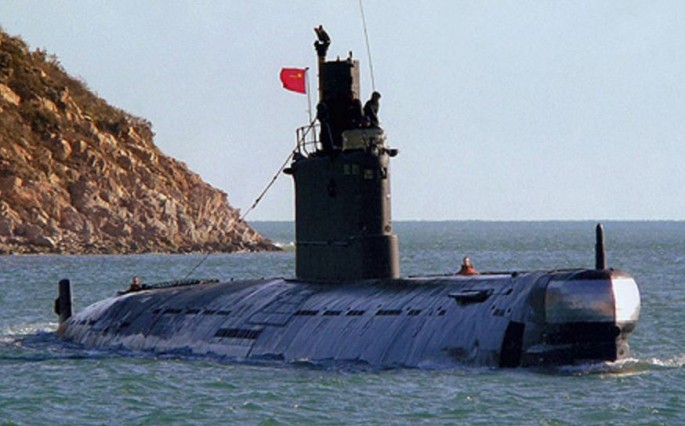The Bangladesh Navy on Nov. 14 took delivery of two Chinese-made diesel-electric attack submarines as part of a long-term rearmament program aimed at making it a force capable of effectively protecting Bangladesh's legal claims to the Bay of Bengal by 2030.
Admiral Mohammad Nizamuddin Ahmed, Chief of the Naval Staff of the Bangladesh Navy, received the two Type 035G Ming-class submarines during a ceremony at Liao Nan Shipyard in Dalian City in Liaoning Province where the boats were built.
These submarines are the first to be operated by the Bangladesh Navy.
When they're commissioned into the Bangladesh Navy in 2017, the submarines will carry the names, BNS Nabajatra and BNS Joyjatra. Bangladesh paid $203 million for both submarines.
Under the leadership of Prime Minister Sheikh Hasina, Bangladesh has been expanding its military power over the past seven years. Bangladesh's strengthening of its navy and the Bangladesh Air Force isn't directed against any of its neighbors but is meant to protect parts of the resource rich Bay of Bengal under its control.
A decision in its favor by the International Tribunal for the Law of the Sea (ITLOS) in its long-standing maritime border dispute with Myanmar handed down in March 2012 gave Bangladesh sovereignty over 111,631 square kilometers of sea, an area nearly equal to its entire landmass.
Bangladesh also received legal rights to an exclusive economic zone up to the 200 nautical miles in the Bay of Bengal.
That territory has got to be protected and exploited to grow the economy. Dhaka has begun to invite bids from multinational firms to explore for oil in the Bay of Bengal.
In 2014, the Prime Minister noted that under her watch, the navy added 12 warships, two maritime helicopters and two maritime patrol aircraft. Among the warships are two new Chinese-made Type 053H2 frigates: BNS Abu Bakar and BNS Ali Haider. The two new submarines are welcome additions to the navy.
The Type 035G submarines are about 20 years old. A total of 12 were built and commissioned for the People's Liberation Army Navy (PLAN) between 1990 and 1999.
Its offensive weapon is the Chinese-made Yu-3 acoustic homing torpedo designed to be fired from submarines against surface targets. The torpedo carries a 205 kg warhead and is 7.8 meters long. It travels at an underwater speed of 35 knots or 65 km/h.



























